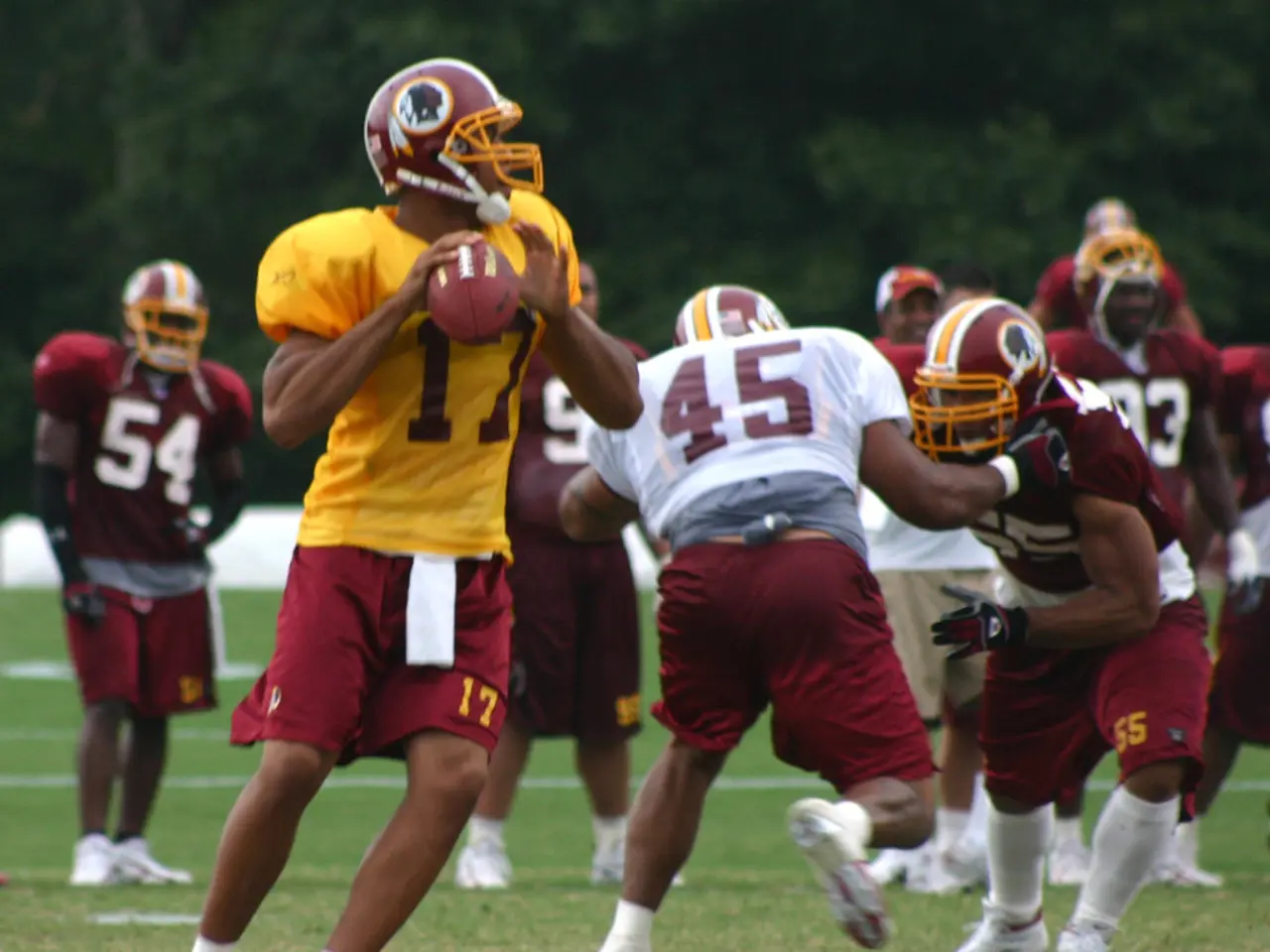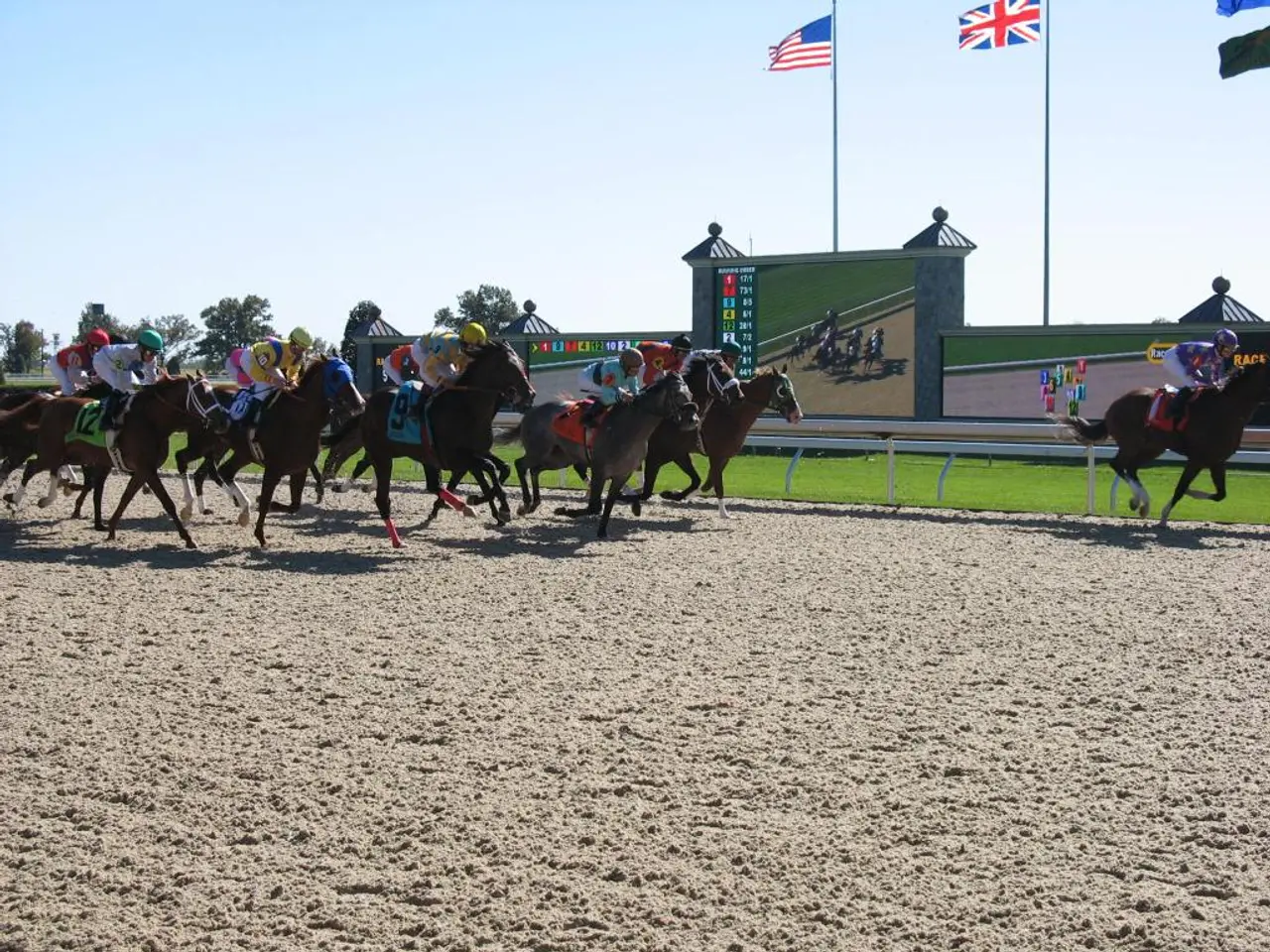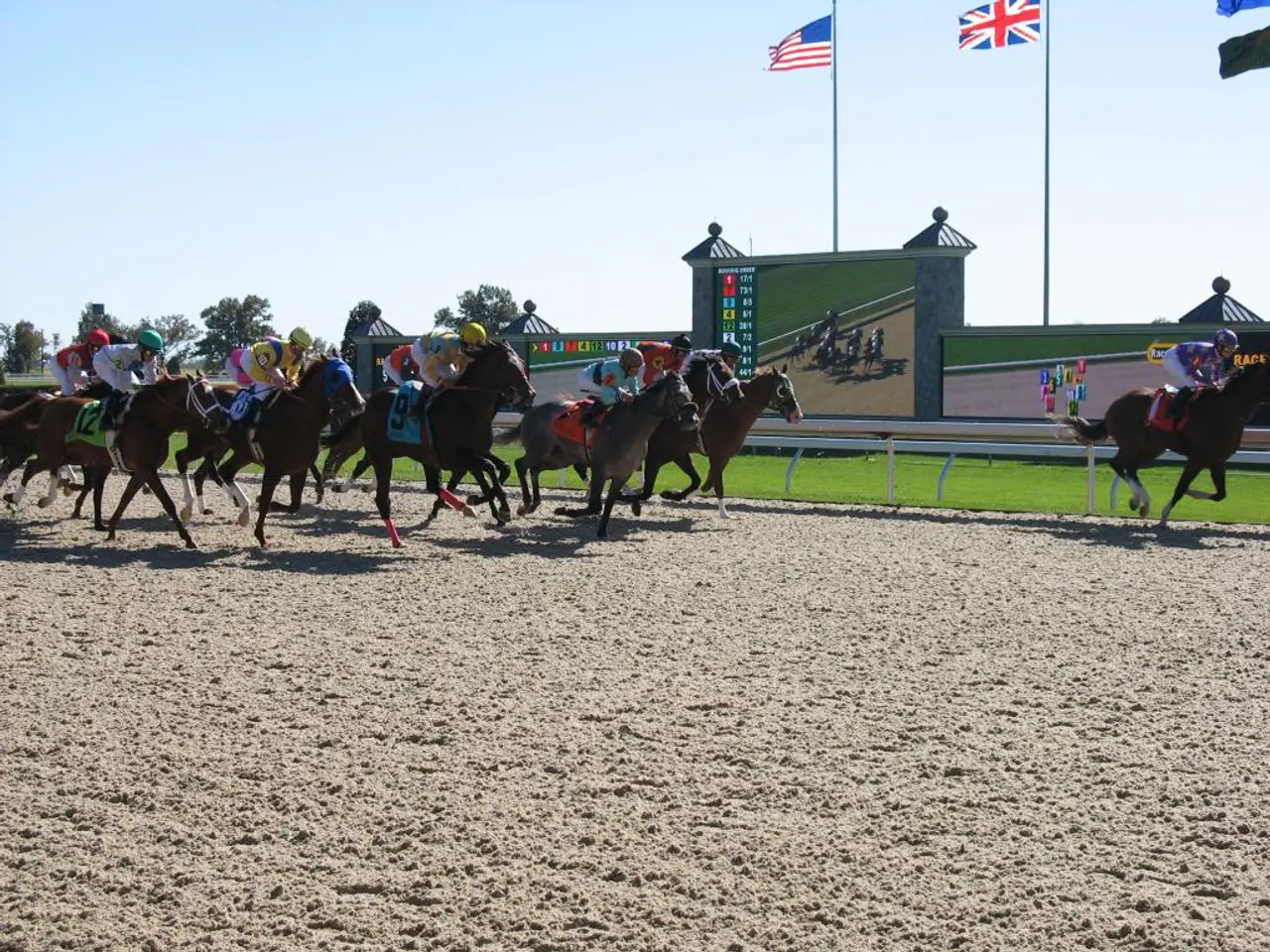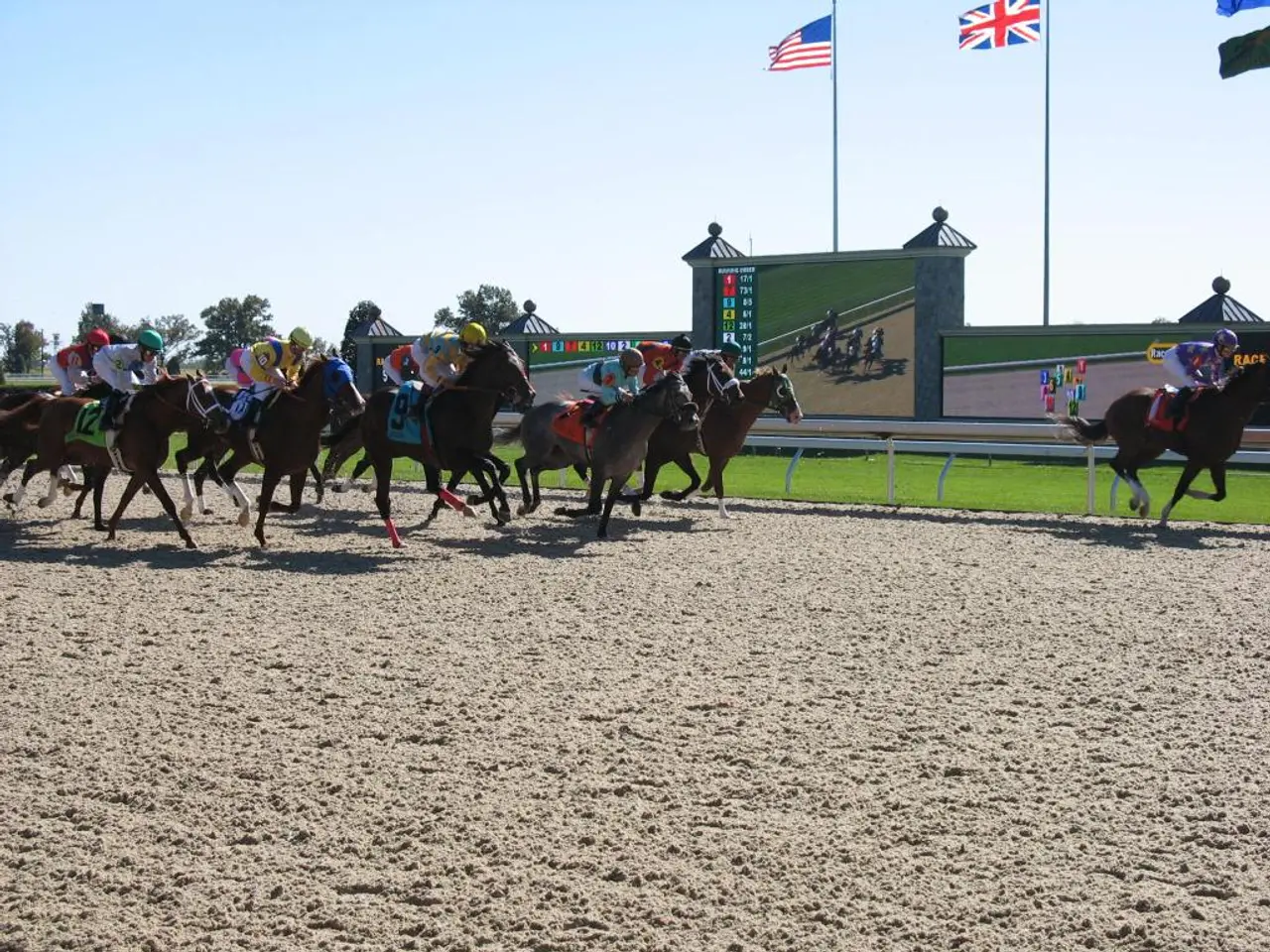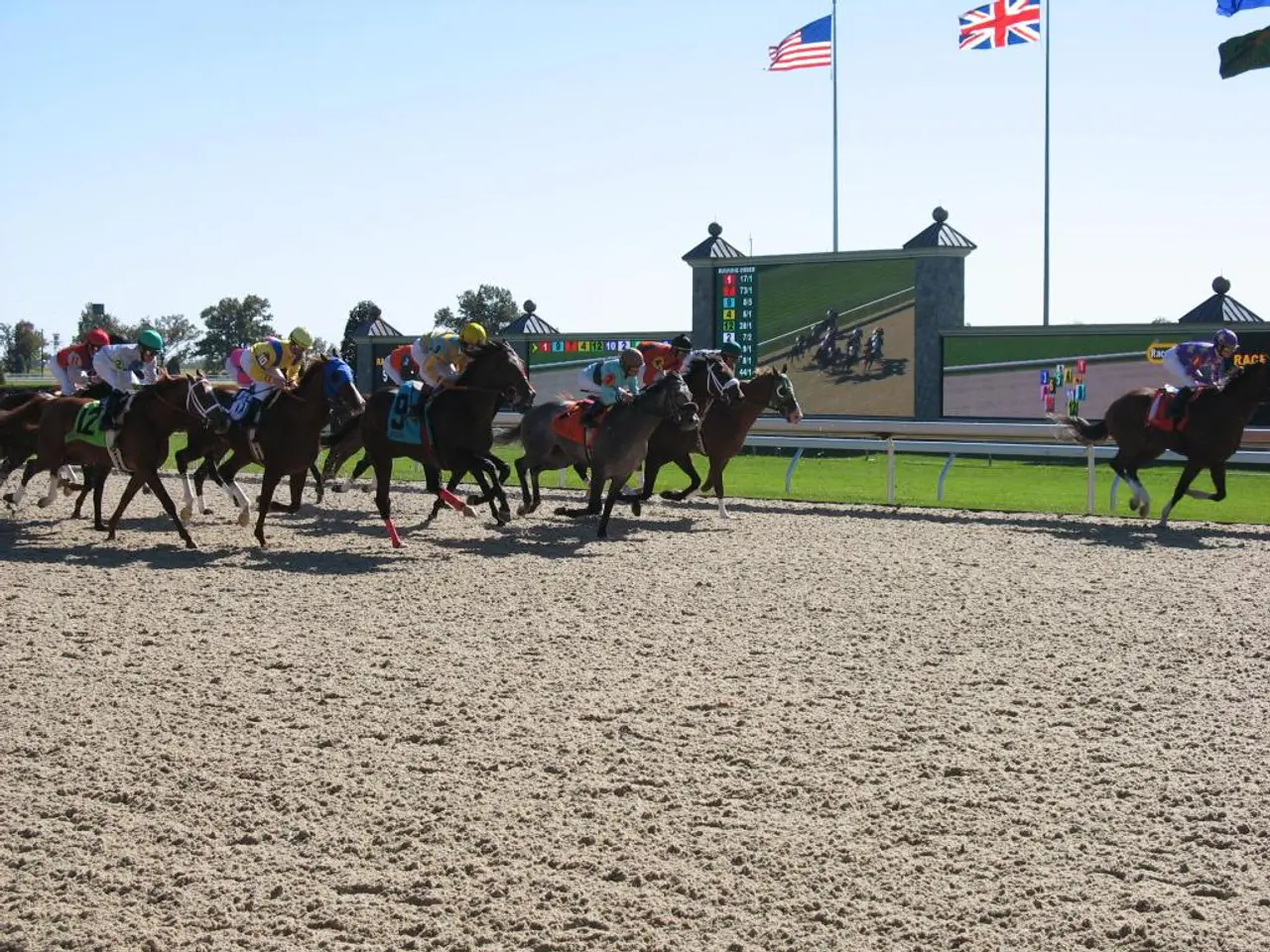The Functioning of American Football Explained
Downs and distances are fundamental elements in American Football, particularly in the NFL, shaping the course of the game. Here are the key points:
Downs
- Definition: A down refers to a play from scrimmage where the offense attempts to advance the ball. The offense has four downs (or attempts) to move the ball 10 yards towards the opponent's end zone.
- Earning a New Set of Downs: If the offense succeeds in moving the ball 10 yards or more in four downs or fewer, they earn a new set of four downs, starting again at "1st and 10" unless they are close to the end zone.
- Consequence of Failure: If the offense fails to advance 10 yards after four downs, they lose possession of the ball, and the opposing team takes over at the spot where the fourth down ended.
Distances
- Yardage Required: The offense must gain at least 10 yards to earn a new set of downs. However, if they are close to the opponent's end zone, the required yardage may be less.
- Down and Distance Phrases: Phrases like "1st and 10" or "3rd and 3" indicate the current down and the number of yards needed to earn a new set of downs.
Additional Rules on 4th Down
- Options: On the fourth down, teams have one last chance to gain the required yards. If unsuccessful, the ball is turned over to the opposing team.
- Field Position Decisions: Teams may choose to punt the ball to the opposing team if they are too far from the end zone for a field goal, or they may attempt a field goal if they are within range.
Recent Developments
- Measurement Technology: The NFL has started using camera-based technology for measuring first downs, replacing the traditional chain system, to improve efficiency and accuracy.
In American Football, scoring points is crucial, and a touchdown is just one way of doing so. A team can kick a field goal for an extra point or attempt to run or pass the ball into the end zone for a two-point conversion.
The NFL is a fast-paced sport with multiple roles, including special teams (placekicker, punter, and returner), offensive (quarterback, offensive linemen, receivers, and running backs), and defensive positions (defensive linemen, linebackers, cornerbacks, and safeties). Each team is allotted two challenges per game, and if the team loses the challenge, it loses a time-out, and the official's call stands.
Modern NFL games are covered by as many as 20 cameras, ensuring every moment of the action is captured. The field is divided into four quarters, with each quarter being 15 minutes long. If the game is tied after four quarters, an additional overtime period of 15 minutes is played.
In an NFL roster, only 11 players per team are allowed on the field at any one time. The teams are divided into offense, defense, and special teams. The referee is the head official on the field, responsible for giving signals and serving as the final authority on rule interpretation. The umpire rules on players' equipment and conduct, and takes a position about five yards behind the line of scrimmage. The line judge keeps time during the game to backup the official clock operator and backs up the head linesman on line-of-scrimmage calls. The back judge makes calls regarding the tight end and the player the tight end might be blocking and is responsible for keeping the time for the 25-second play clock, time-outs, and intermissions.
The football field is a rectangle that is 120 yards (110 m) long and 53 yards, 1 foot (49 m) wide. The most essential piece of equipment in a football game is the ball, which is handmade by Wilson Sporting Goods Co. and weighs between 14 and 15 ounces (397 - 425 grams). The goalposts are centered at the back of the end zone, with an 18-foot, 6-inch (5.5-meter) cross bar and two upright posts that rise to a height of 30 feet (9 meters) above the ground.
Some common rules include encroachment, where a defending player moves into the neutral zone and makes contact with an offensive player before the ball is put in play, and the tuck rule, which states that if a player, typically the quarterback, drops the ball when his arm is moving forward to tuck the ball away, the action is considered an incomplete pass rather than a fumble because his arm is moving forward.
The leaping rule states that while players can block kicks, they cannot run from more than 1 yard behind the line of scrimmage to do so. The "Emmitt Smith" helmet rule states that a player cannot remove his helmet on the field unless it is to adjust his equipment. Chop blocks and clipping are illegal blocks thrown below the waist of an opposing player. Intentional grounding is when a quarterback intentionally throws the ball away to avoid being tackled behind the line of scrimmage for a loss of yards. A fair catch allows a player receiving a kick or punt to signal that he does not intend to return the ball and cannot be tackled or moved beyond the spot where he catches the ball. A player is tackled in his own end zone, resulting in a safety for the other team and a free kick.
Excessive crowd noise can result in a penalty for the home team or the loss of a time-out. The kicking team is hoping to kick the ball down the field and tackle the receiving team's kick returner before he comes back down the field. A team recovers a ball dropped by the other team (fumble) or picks off a ball thrown by the other team's quarterback (interception). A team receives a kickoff at the beginning of each half and after the other team scores.
In American Football, specifically in the NFL, football and NFL are synonymous with American-football, and scoring points through touchdowns, field goals, or two-point conversions is crucial. A team can gain new downs by advancing 10 yards or more, with the phrase "1st and 10" indicating the first down and zero yards needed for the next one. The fourth down presents a crucial moment, as teams can attempt to earn the yards or punt the ball, considering field position decisions. The NFL has implemented camera-based technology to measure first downs more accurately.
